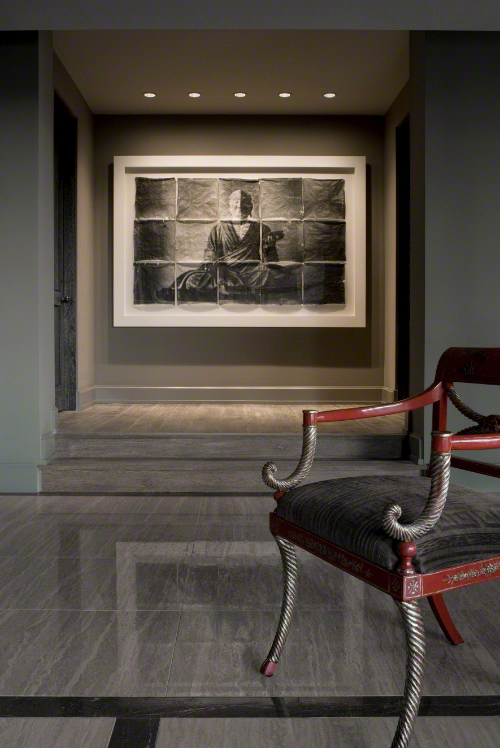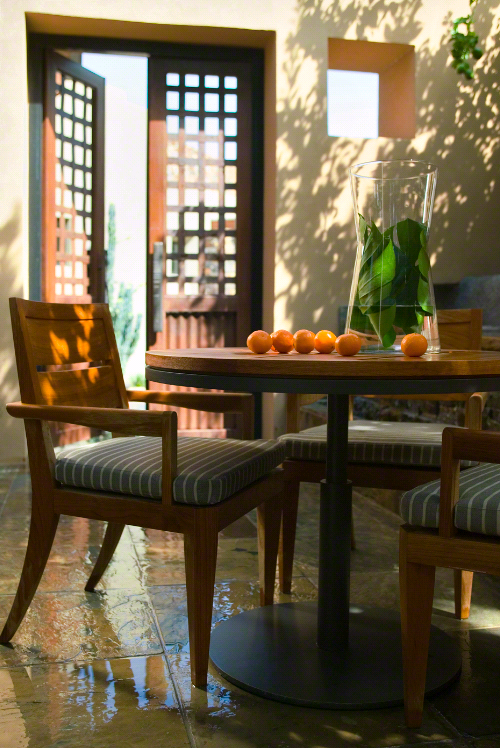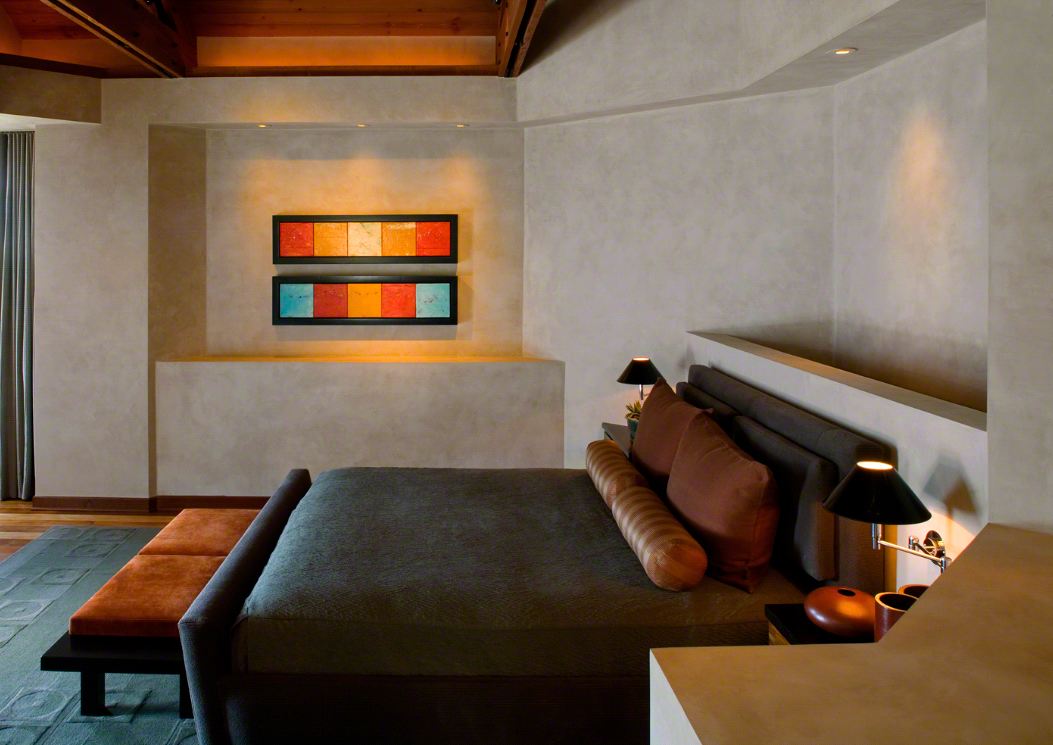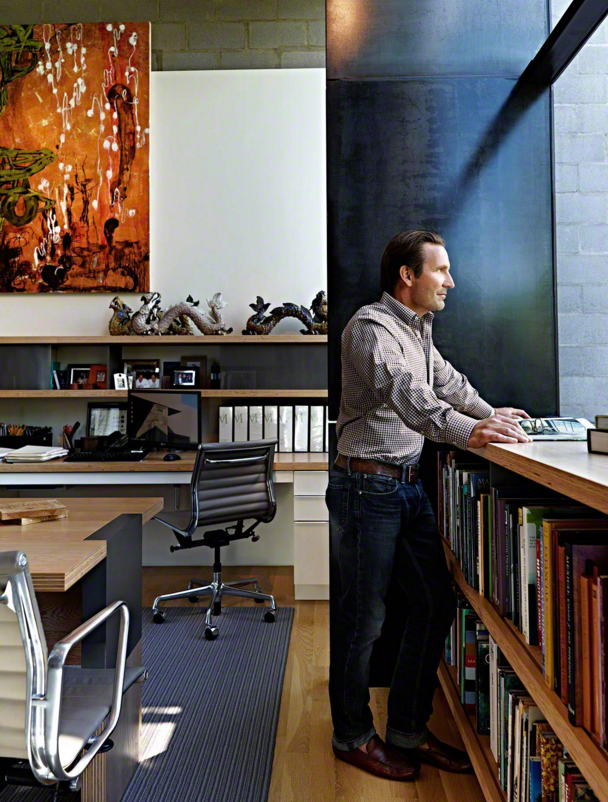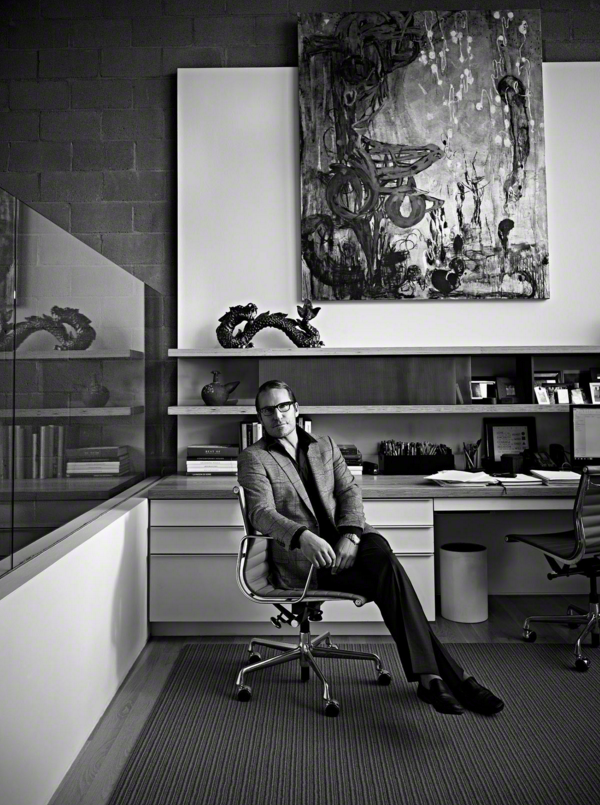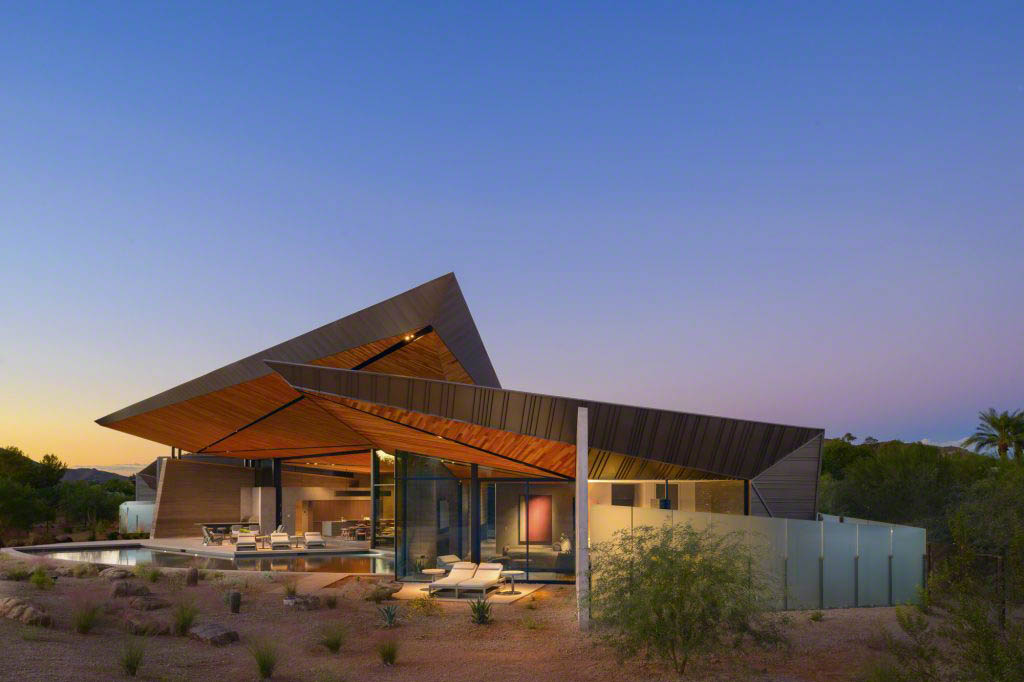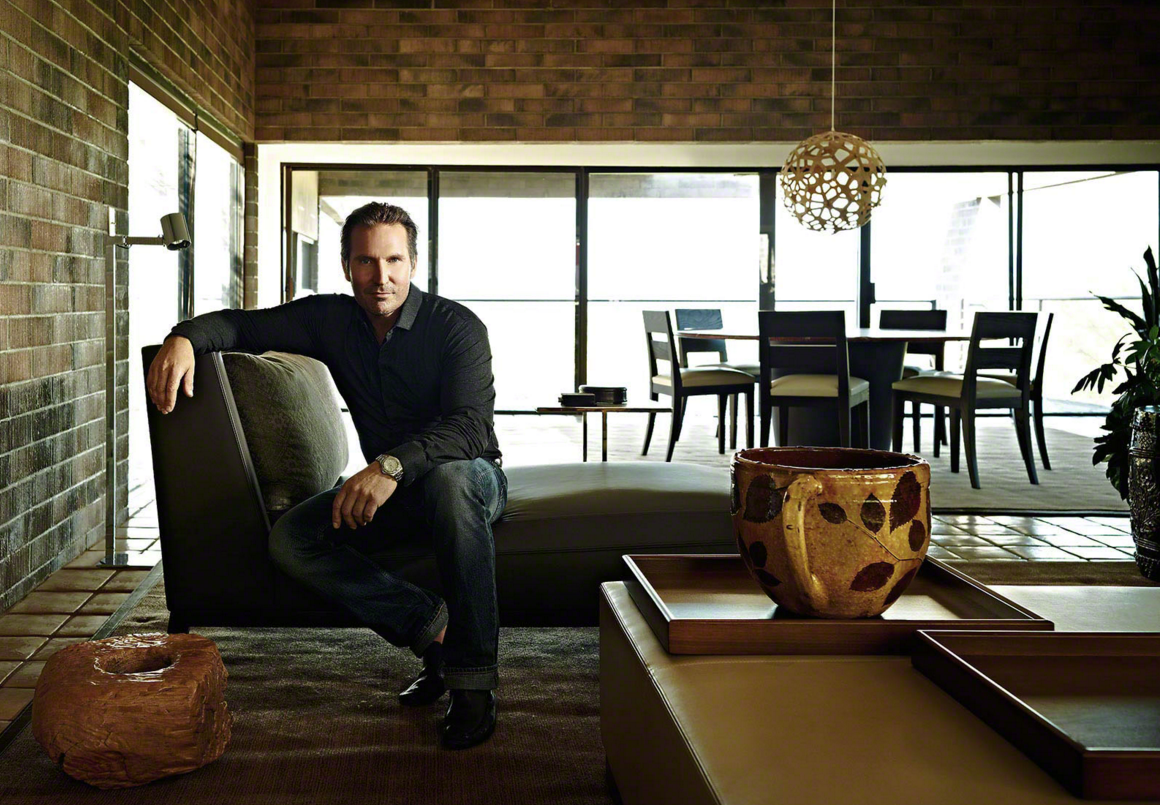
PROFILES IN EXCELLENCE
with David Michael Miller of David Michael Miller Associates
“To get to a simple, calm, cohesive end product, all these careful choices have to be made along the way. If there are too many details that aren’t quite right in the finished product, it just doesn’t work. We’ve been able to meld two worlds together where the creative side is just as important as the delivery and the execution.”
NAVIGATING DESIGN EXCELLENCE
The interiors designed by David Michael Miller Associates strike a delicate balance between exacting precision and intuitive delivery that enhances both the look and feel of many DSC custom homes in Arizona. Their design philosophy includes 7 distinct perspectives that enable David Michael Miller and his team to navigate discerning clients through the exciting journey of defining their custom residence’s individual style.
SPHERE OF INFLUENCE
I like participating in the entire process – this includes working closely with both the architect and the builder, like Desert Star. Interior designers are quite involved in determining interior surfaces and specifications, so we end up influencing what I call the container, or the project, and the things that will be placed inside the container. This level of participation makes sense particularly on the customization level because all of us – the architect, builder, and interior designer – play an integral role in creating the end result.
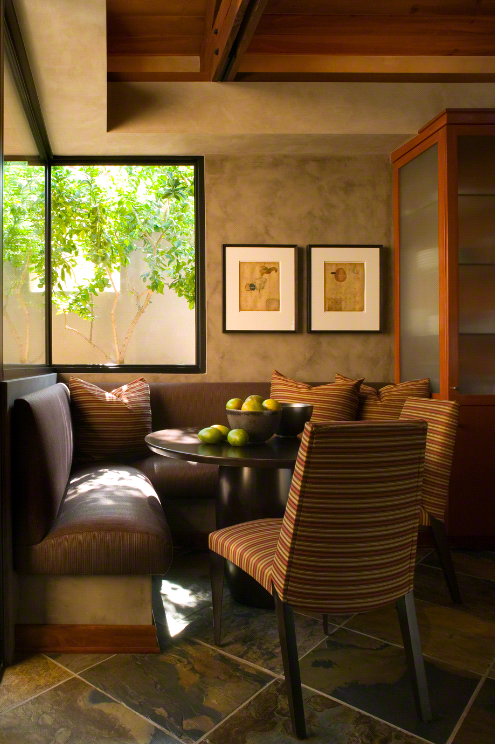
A UNIQUE UNDERSTANDING
Initially, I wanted to become an architect when I began my career. My path took a different turn, and I became the interior designer I am today, but that initial passion gave me a unique understanding of how interiors fit inside the containers and how they integrate within the architectural flow. A common thing I hear people say when they’re going through a luxury home we’ve done is that it is so peaceful, so restful, so calm, so soothing. I love hearing that, because I think that means the architecture, interiors, and construction are synthesized as one experience as opposed to them thinking, “Okay, I see where the architect was, how the builder fits in, and where the designer begins, and each one is operating next to the other.” My aim is to integrate the architecture, the construction, and the interiors as one seamless experience.
THE BUILDER’S ROLE
It’s always helpful if the builder understands where the designer and architect are coming from and the elements they want to pursue. Desert Star does a great job of understanding where the architect and designer are headed aesthetically. In terms of the creative aspect, I think the builder contributes economic efficiencies that the design people might be unaware of. An expert builder like DSC would say, “There’s a much more efficient way to get to where you want to go.”
If they have an aptitude like an architectural or design background, it’s extremely helpful because they listen to the conversation between the architect and the designer, and they’re able to bring the expertise of the realities of building practices to the project. It’s what I call the perfect storm.
Our backgrounds and years of experience make us all adept in our respective field of expertise. At the same time, we also understand how it all fits together like a puzzle. We’re expanding our capabilities enough to fit into the place where the other needs us to understand what it is they’re trying to achieve. It’s especially helpful when the entire team has an aptitude to respectfully communicate how a project could be improved. That is always a welcome skill for both the client and the team working together for the success of the project.
FROM THE GROUND UP TO 40,000 FEET
During the building process, we have a range of clients – some want to be super involved in every minor detail and others are so busy all they can do is the 40,000-foot flyover where they’re looking at what we’ve done and saying either yes or no.
I enjoy working with both types of clients. The 40,000-foot flyover could be considered to be more efficient. The other type of client, however, brings a personal approach and makes the house more individualized. Whether the busy client can only afford as much time as a 40,000-foot flyover will allow or we are able to work more closely, our team remains exceptionally well organized, so we are highly focused when it comes to collaborating with the architect and the builder. Jerry jokes that he appreciates that my team has a calendar and a calculator, because this allows us to remain realistic in terms of the schedule, the budget, and the demands of the fieldwork.
BRINGING THE VISION TOGETHER
When it comes to our process, we make it very easy for our clients to understand our objectives by putting together an image book. Inside this book is a collection of images that communicate the architect’s vision as well as the client’s program requirements for their custom home. Our book allows us to show how these two worlds interact and become one. Sometimes that book needs one, two or three additions to get refined to the point where everybody feels good about it.
Sometimes I’ve had clients who are more involved come to me with magazine articles of their favorite designs. Creating their vision becomes easy because we’re already intuitively on the same page. Sometimes it’s more nuanced and more challenging to get where we want to be, but we always get there. Other times our clients know exactly what they want, but when they start getting into the world of design and realize how varied the selections are, it becomes overwhelming for them. With all of those situations, it’s a total collaboration between our team and the client to create an incredible project they know is truly their own.
THE ROADMAP TO EFFICIENCY
Once we complete the image book, we walk forward into our specification manual. I know Jerry and his team love this manual because it is the recipe book for what the interiors are going to be. For the team out in the field, instead of hounding our design team for an answer, the information is already there in the manual. Not that there are never changes once that book is published, but it becomes a great roadmap.
Creating the manual is very meticulous, labor-intensive work. But it pays in efficiency in the field. It’s all about the fine details, because it takes a lot of details to get to the point where the design flows and looks simple. It’s like the artist who practices for hours to make their art look easy to do.
PROCESS DEFINED
We’re very specific with clients about the details of everything we’re designing and obtaining for their project. We’ll tell them what we’re going to buy, who we’re buying it from, what their finishes are, and where specific items will be placed on site. We want the client fully informed, because a project can quickly turn into a nightmare if you’re not on top of every last detail.
This high-level of detail is so important because we’re illustrating all of the selections in a realistic way so that a builder like DSC has the opportunity to tell us whether what we’ve designed is buildable or not. If we only use a tear sheet of a tile and a tear sheet of an appliance and say, “You guys figure it out,” we’ll end up with a mess on the field because there is too much room left for interpretation and guesswork. To get a simple and calm end product, all these careful choices have to be made and presented in a cohesive way so every person involved is clear as the project evolves.
As we’re walking the construction forward, we’ll get started with furnishings about twelve months before the client moves in. As the creative designers, we show the client a materials palette and a product palette to get an initial reaction. A lot of times we’ll travel with the client to the factories where the materials are made, so they can touch, feel, and understand exactly what they’re buying. The clients then make their final selections and we begin purchasing. Our team generates the product orders, and once they arrive, they get collected in storage and come out to the job site once the home is ready to receive them.
CLOSE TO THE HARVEST
I liken the design and build of a custom luxury home to tending gardens. If you plant a garden and walk away from it, three months later when you want to harvest, you won’t have anything left but weeds. You’ve got to be out there in the field weeding and tending to everything. We’re working on Lionheart Manor with Team DSC® and there’s such a high level of detail that we simply have to be there every couple of weeks to see what’s going on.
I’ve found in working with Jerry and Team DSC® that they also work hard at being involved on the job sites. You see it in the level of quality they are able to achieve with every project. There’s simply a difference if a principal contributor is really into the project or just walking alongside and passively watching. There’s a lot of value in staying close to the work because then you understand what’s being delivered. You become responsive by knowing how you can support if the project is not going the way it should.
DAVID MICHAEL MILLER ASSOCIATES AND TEAM DSC®
“The first project we worked on with Desert Star Construction was the first luxury custom home they built for the client of Lionheart Manor. That was 1991. Twenty-five years later we’re about to complete our third custom home for this same client in Paradise Valley, AZ.
As companies we’ve been great long term partners because we both value the importance of walking a straight line of efficiency while maintaining the creative vision to see the overall picture and deliver on that vision with excellence.”
